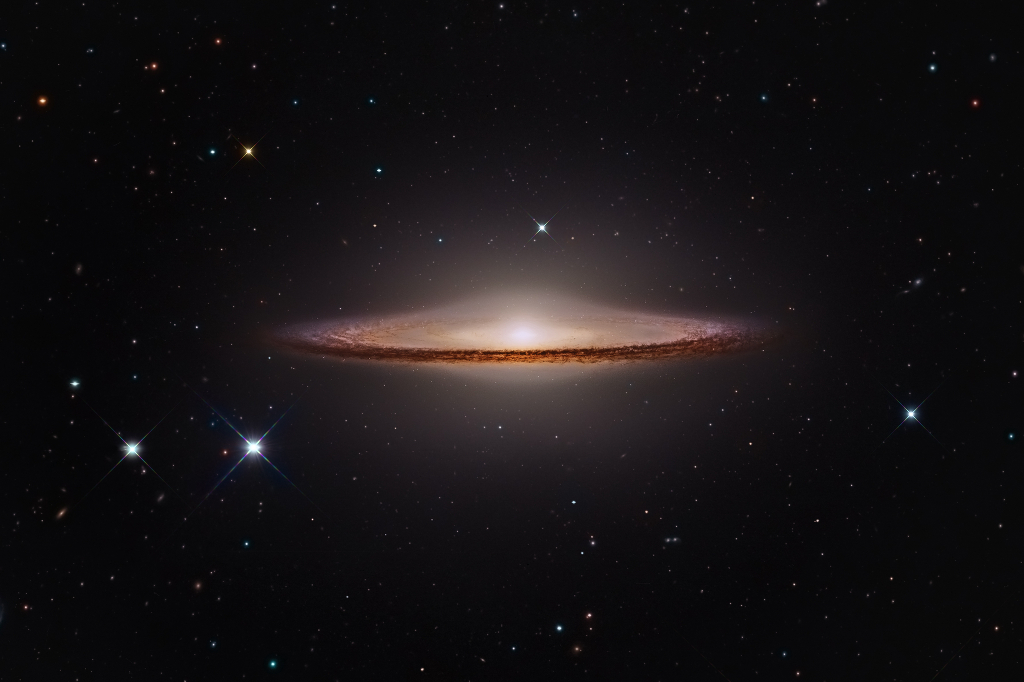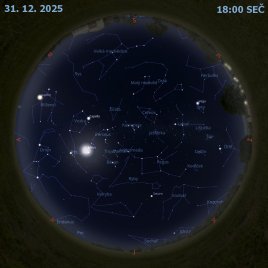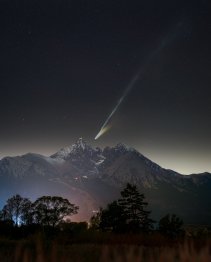M104: Galaxie Sombrero

Obrazová data: NASA, ESA , NAOJ, Giovanni Paglioli - Processing: R. Colombari
Výrazná spirální galaxie M104 je slavná tím, že je vidět téměř z boku a vykazuje široký prstenec neprůhledných prachových pásů. Je vidět v siluetě proti rozsáhlé výduti hvězd a pásů kosmického prachu, čímž vzniká kloboukovitý vzhled a ten dává galaxii její populární název, Galaxie Sombrero. Data z Hubblova kosmického dalekohledu spolu s pozemskými daty ze Subaru byla zpracována za pomocí amatérských barevných dat a tak mohl vzniknout ostrý pohled této dobře známé galaxie. Výsledkem zpracování je vzhled v přirozených barvách, který má podrobnosti často ztracené v ohromující záři jasné centrální výduti M104 při pozorování menšími pozemskými přístroji. Galaxie Sombrero je též známa jako NGC 4594, lze ji vidět přes celé spektrum a považuje se za hostitele centrální supermasivní černé díry. M104 měří asi 50 000 světelných let, je 28 miliónů světelných let daleko a je jednou z největších galaxií na jižním okraji Kupy galaxií v Panně.
NASA Official: Phillip Newman Specific rights apply. NASA Web Privacy Policy and Important Notices
A service of: ASD at NASA / GSFC & Michigan Tech. U.
Odkaz na originální APOD


